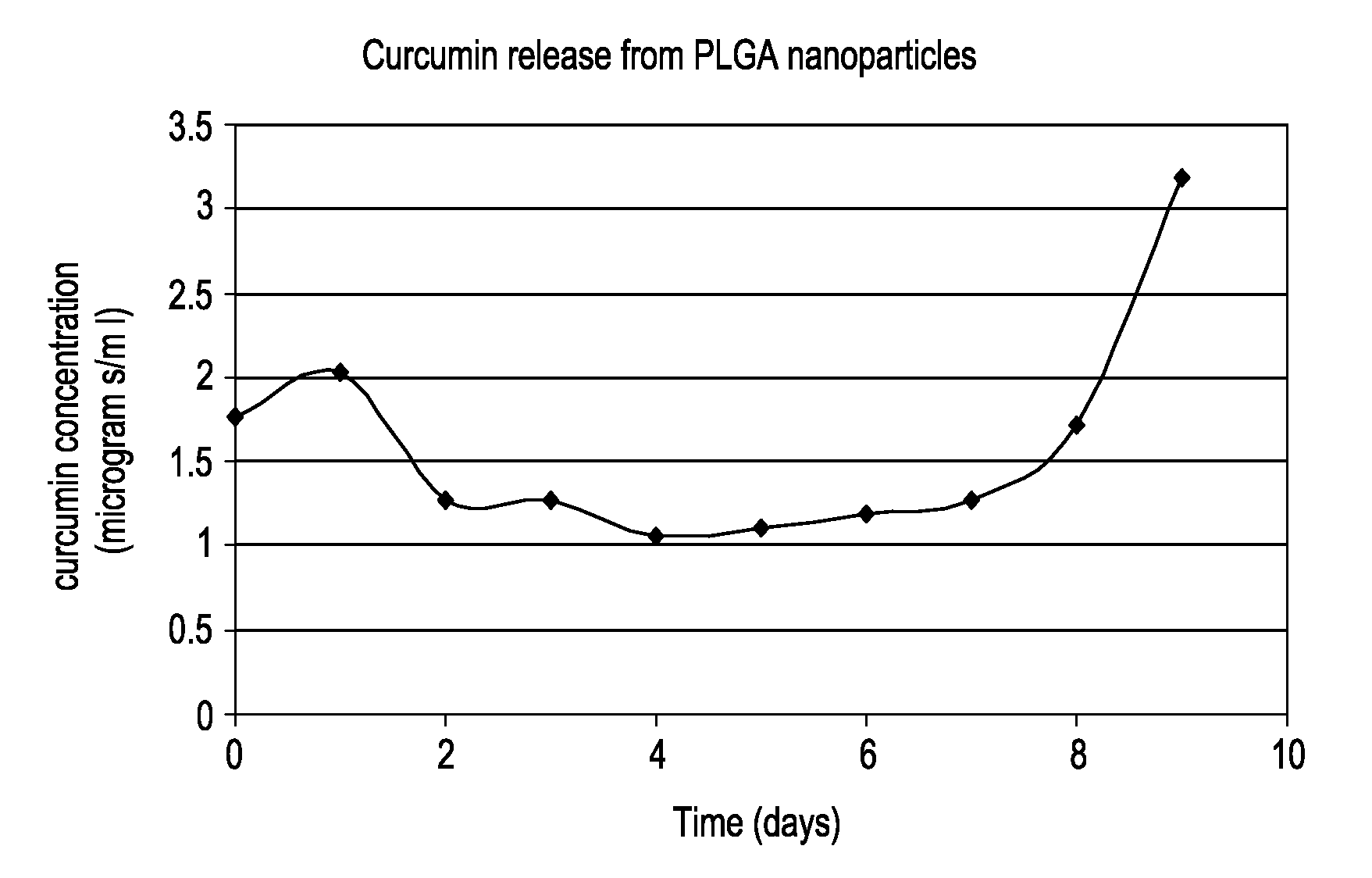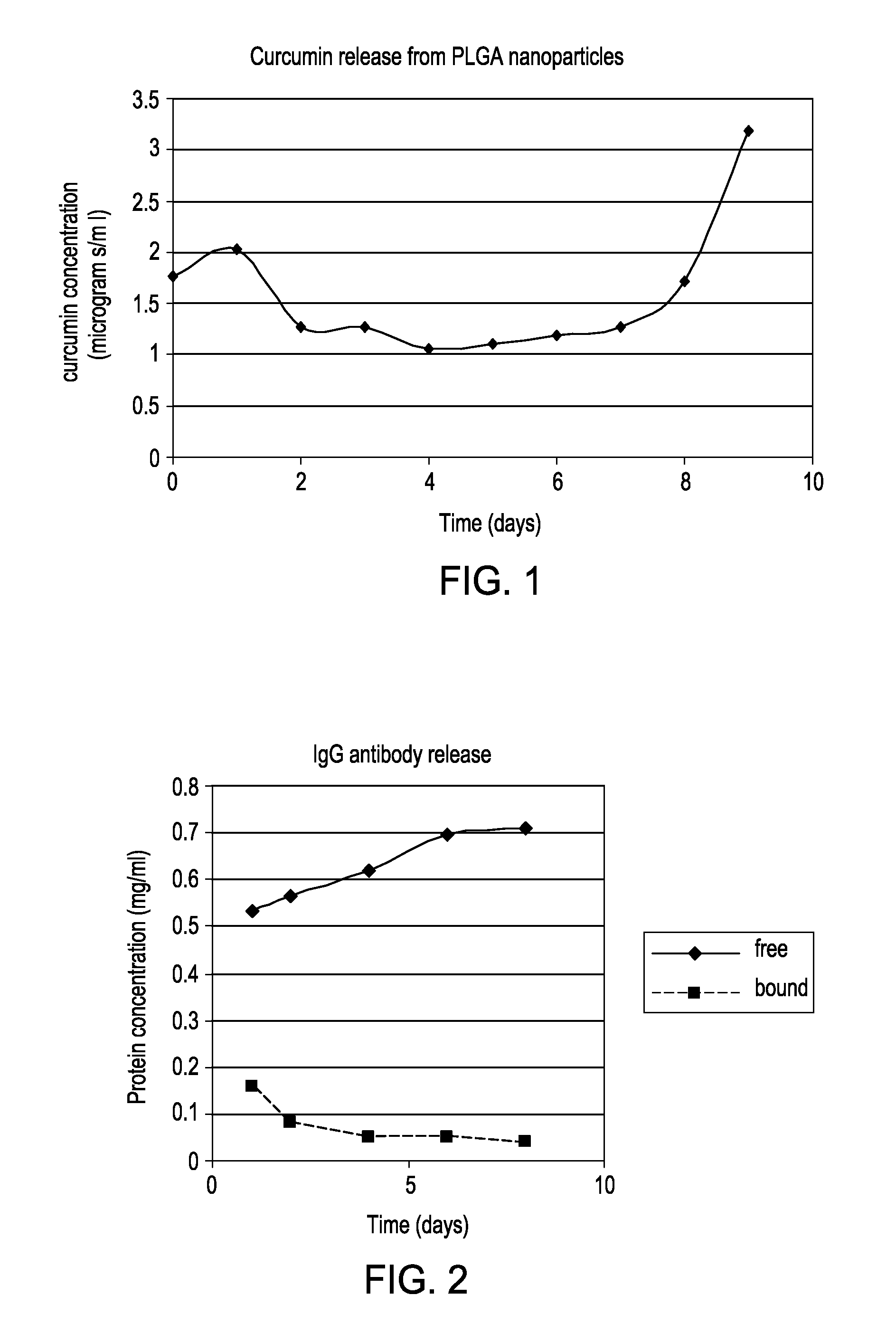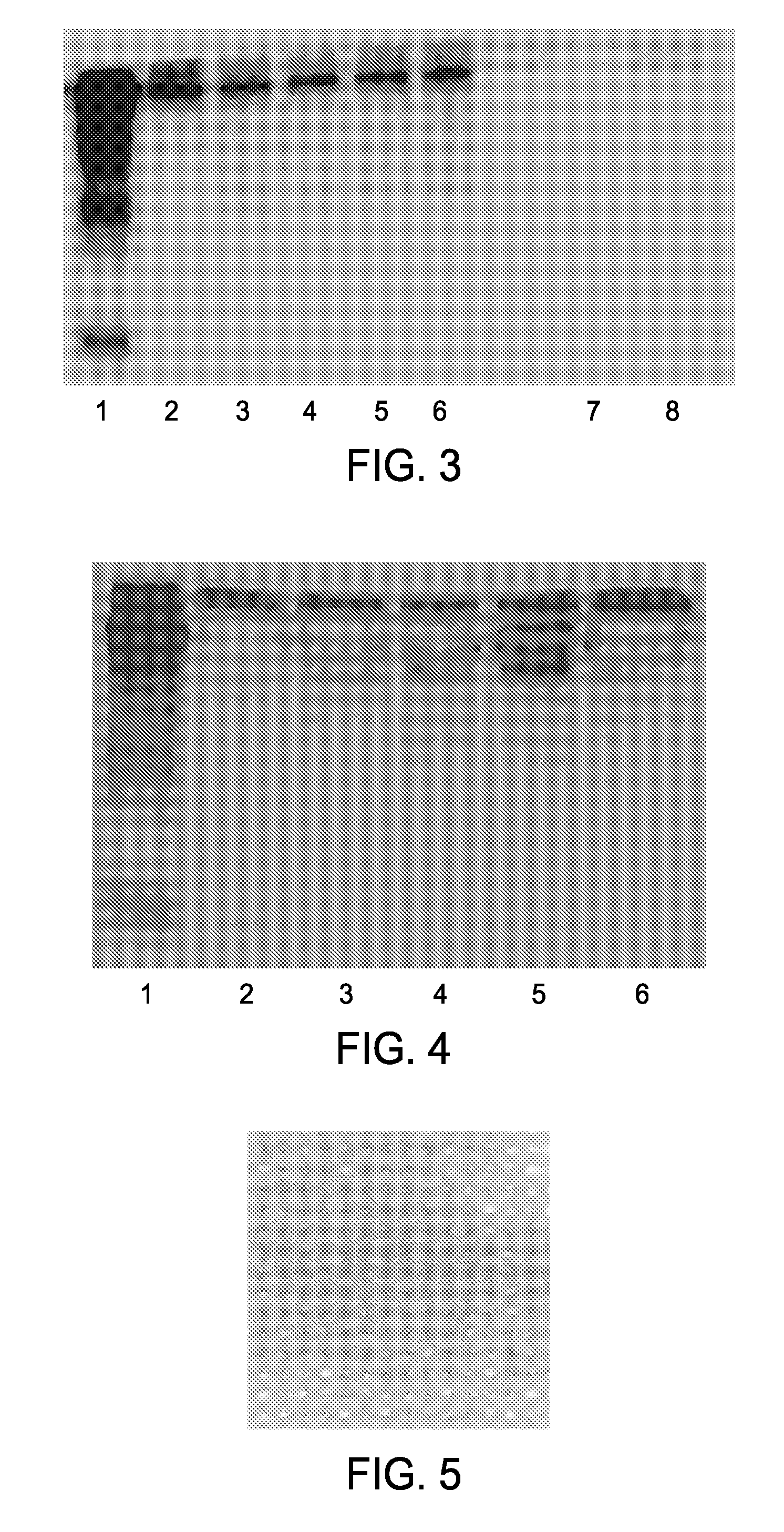[0006]The present invention includes compositions and methods of making an activated polymeric
nanoparticle for
targeted drug delivery that includes a biocompatible
polymer and an amphiphilic stabilizing agent non-covalently associated with a spacer compound containing at least one
electrophile that selectively reacts with any
nucleophile on a targeting agent and places the targeting agent on the exterior surface of a biodegradable
nanoshell, wherein an
active agent is loaded with the nanoshell. In some embodiments, the nanoshell includes one or more polyesters and one or more amphiphilic
stabilizing agents. The
polyester is poly-
lactic acid, poly-
glycolic acid, poly-lactic-co-
glycolic acid, and combinations thereof. In one embodiment, the amphiphilic stabilizing agent is a
polyol, e.g., the
polyol is
polyvinyl alcohol,
polyethylene glycol,
polypropylene glycol, polypropylenediol,
polytetrahydrofuran, and combinations thereof. The nanoshell may encapsulate an active agent, such as a
plasmid DNA, siRNA, proteins, small molecules, or anti-
cancer agents (e.g., paxlitaxel,
curcumin) for controlled
intracellular delivery. Using the present invention, the nanoshell composition is used to control the ultimate size and
drug delivery rate and / or a targeting agent that selectively targets the nanocarrier to diseased tissue / cells, thereby minimizing
whole body dose.
[0008]The present invention also includes a method of making a targetable, loadable-
nanoparticle by forming a first
emulsion comprising a biocompatible
polymer in a first
solvent and an active agent by, e.g., mixing,
sonication, vortexing or other blending; preparing a second solution comprising an amphiphilic stabilizing agent in water, a non-
solvent used for control of the ultimate size of the nanoparticle and a spacer compound containing at least one
electrophile; forming a second
emulsion by mixing the first
emulsion and the second solution by, e.g.,
sonication, vortexing or other blending methods to form activated, loaded nanoparticles with non-covalently associated spacer compounds; separating the activated, loaded nanoparticles; and binding a targeting agent to the particle at one or more electrophiles on the noncovalently associated spacer compounds. Examples of spacer compounds spacer is homofunctional, heterofunctional, multifunctional, monoreactive, bi-reactive or multireactive,
water soluble, water-insoluble or partially
water soluble. The targeting agent for the nanoparticle may be an
antibody, a
small molecule,
a peptide, a
carbohydrate, a
protein, a
nucleic acid, an
aptamer, a second nanoparticle, a
cytokine, a
chemokine, a
lymphokine, a
receptor, a lipid, a
lectin, a
ferrous metal, a magnetic particle, a
linker, an
isotope and combinations thereof. Active agents for use with the method of the present invention include, e.g., an anti-
cancer drug, an antibiotic, an antiviral, an
antifungal, an antihelminthic, a
nutrient, a
small molecule, a siRNA, an
antioxidant, and an
antibody. The nanoshell may also include one or more polyesters and / or one or more amphiphilic
stabilizing agents. Polyesters for use with the present invention may include poly-
lactic acid, poly-
glycolic acid, poly-lactic-co-glycolic acid, and combinations thereof. One non-limiting example of an amphiphilic stabilizing agent is, e.g., a
polyol,
polyvinyl alcohol,
polyethylene glycol,
polypropylene glycol, polypropylenediol,
polytetrahydrofuran, poly(
ethylene oxide)-poly(
propylene oxide)-poly(
ethylene oxide) (PEO-PPO-PEO) triblock copolymers, and combinations thereof. The nanoshell may encapsulate
plasmid DNA, siRNA, proteins, small molecules or anti-cancer agents (e.g., paxlitaxel,
curcumin) for controlled
intracellular delivery and / or used to control the ultimate size and
drug delivery rate. The targeting agent may selectively target the nanocarrier to diseased tissue / cells, thereby minimizing
whole body dose and in some embodiments, it may be attached to radiolabeled conjugated antibodies on the surface of the nanoparticle. The nanoshell may be loaded with an active agent combines a conventional radioisotopes and a chemotherapeutic and / or adapted for
controlled release of the active agents by pre-determining the polymeric ratios of lactic to glycolic acid. In one specific example the active agent is an
anticancer drug, e.g., curcumin or a derivative thereof.
 Login to View More
Login to View More 


